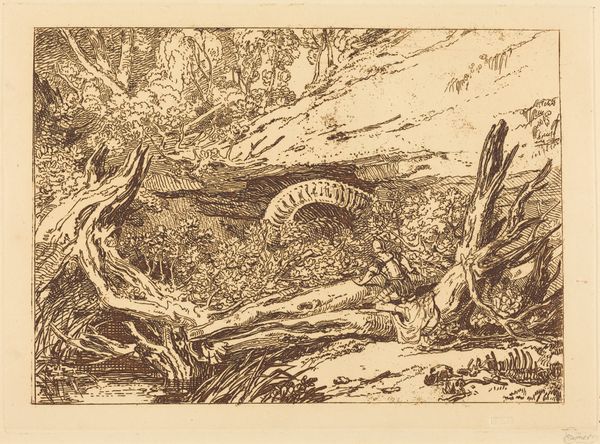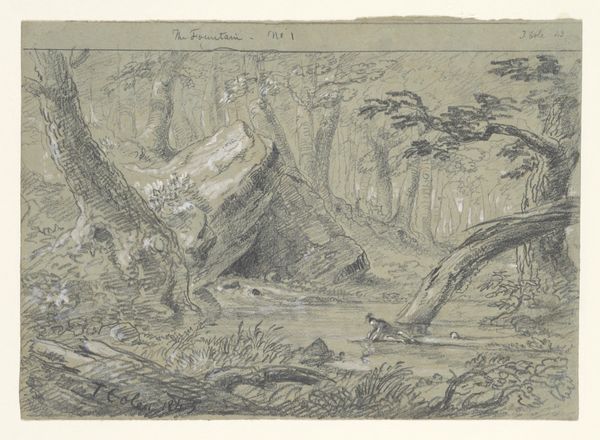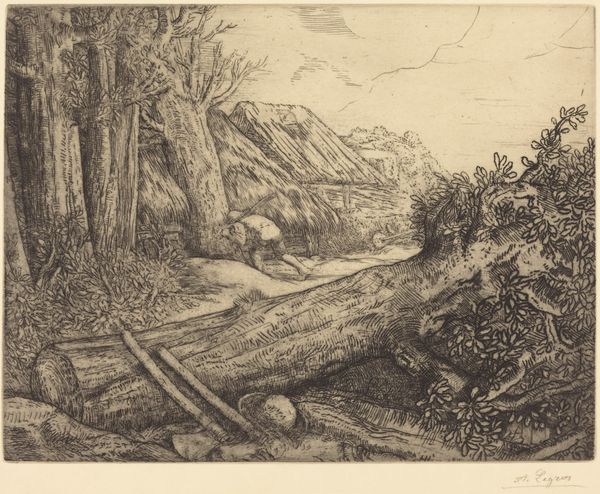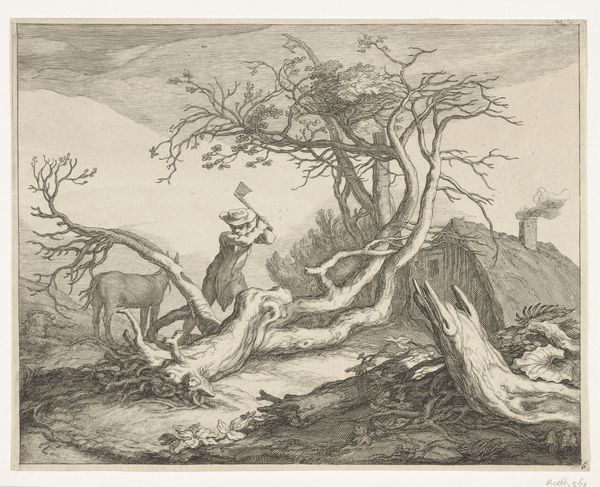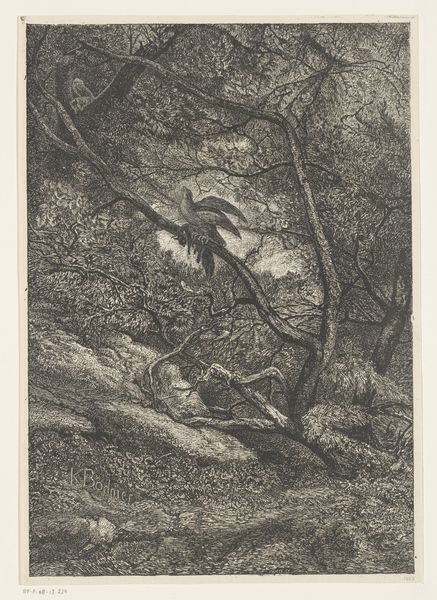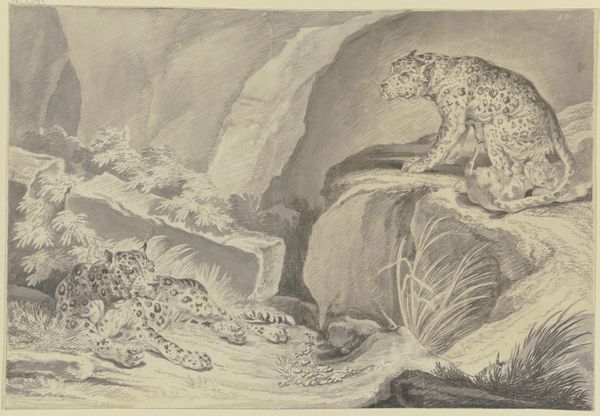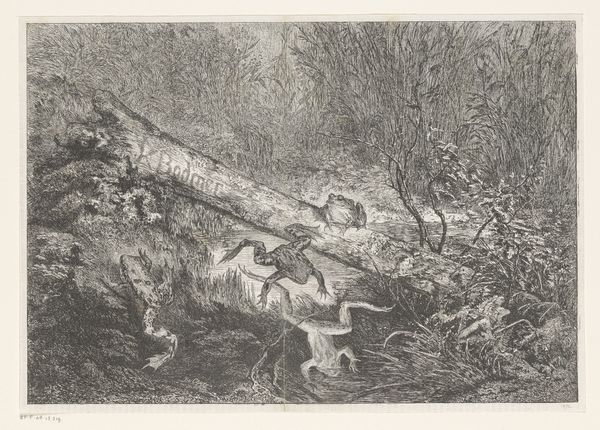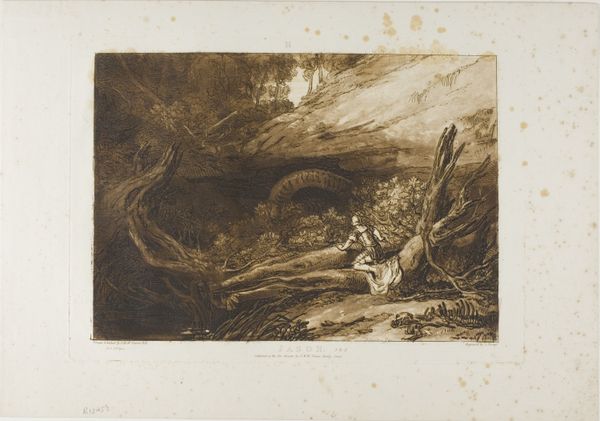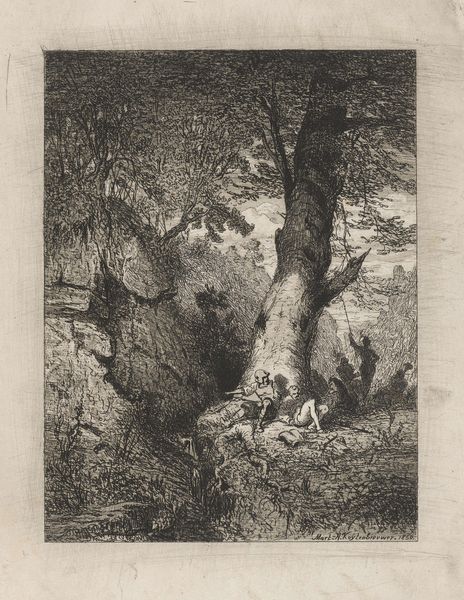
Avalanche: Frontispiece for Triumph of Death (L'avalanche: Frontispice du Triomphe dela mort
0:00
0:00
drawing, print, etching, engraving
#
drawing
#
narrative-art
# print
#
etching
#
landscape
#
etching
#
pencil drawing
#
romanticism
#
line
#
engraving
Copyright: National Gallery of Art: CC0 1.0
Alphonse Legros created this etching, titled "Avalanche: Frontispiece for Triumph of Death," as an introduction to a larger series. The print shows a skull and scythe next to an engraved stone, alluding to the personification of Death. In 19th-century France, imagery of death and decay appeared regularly, especially with the rise of Realism in the visual arts and literature. Legros was part of a generation trying to break away from the rigidity of the French academy, and this interest in modern, darker subject matter made him popular with avant-garde circles, as well as the English market. Legros, like many of his contemporaries, was interested in printmaking. This allowed him to democratize his art, selling prints to a wider audience at affordable prices. We can better understand Legros’s artistic intentions by exploring archival exhibition records and reviews of his prints. This helps us understand that art, including depictions of death, is always made and viewed within a specific cultural and institutional context.
Comments
No comments
Be the first to comment and join the conversation on the ultimate creative platform.
